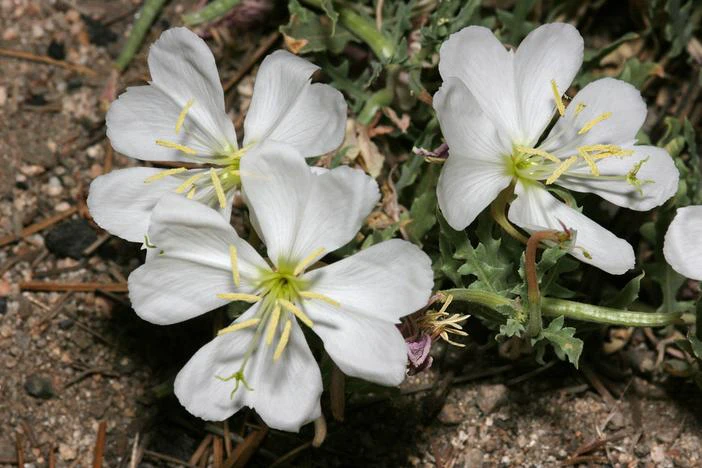California Evening Primrose
(Oenothera californica)
California Evening Primrose (Oenothera californica)
/
/

Cecelia Alexander
CC0 1.0














































Estimated Native Range
Climate Requirements for Sasebo, Japan
| This Plant | Your Site | Plant Suitability for Your Location | ||
|---|---|---|---|---|
| • Precipitation | 2" - 35" | 77" | Aquatic | Aquatic |
| • High Temp. | 73°F - 112°F | 87°F | Your summer temperatures are normal for this plant. | Excellent |
| • Low Temp. | 12°F - 47°F | 36°F | Your winter temperatures are normal for this plant | Excellent |
Summary
The plant is valued for its drought tolerance and the delicate, fragrant flowers that open in the evening and close by the next midday, making it a unique addition to xeriscapes and rock gardens. It is also used in restoration projects due to its ability to stabilize soils. California Evening Primrose requires minimal maintenance once established and attracts pollinators such as bees and moths. It thrives in full sun to part shade and prefers well-drained soils. While generally disease-free, it can be susceptible to root rot if overwatered.CC BY-SA 4.0
Plant Description
- Plant Type: Herb
- Height: 0.5-2 feet
- Width: 1-1.5 feet
- Growth Rate: Moderate
- Flower Color: White, Pink
- Flowering Season: Spring
- Leaf Retention: Evergreen, Semi-Deciduous
Growth Requirements
- Sun: Full Sun, Part Shade
- Water: Low
- Drainage: Fast
Common Uses
Bee Garden, Bird Garden, Butterfly Garden, Deer Resistant, Drought Tolerant, Fragrant, Hummingbird Garden, Low Maintenance, Rabbit Resistant, Showy Flowers
Natural Habitat
native to dry open areas, such as chaparral, coastal sage scrub, and desert edges in California, the Southwest US, and Baja California
Other Names
Common Names:
Scientific Names: Oenothera californica, Oenothera californica subsp. californica, Oenothera californica var. glabrata, Oenothera californica var. typica, Anogra californica, Oenothera pallida var. californica, Oenothera albicaulis f. californica, Oenothera albicaulis var. californica, Oenothera californica var. californica
GBIF Accepted Name: Oenothera californica (S.Watson) S.Watson